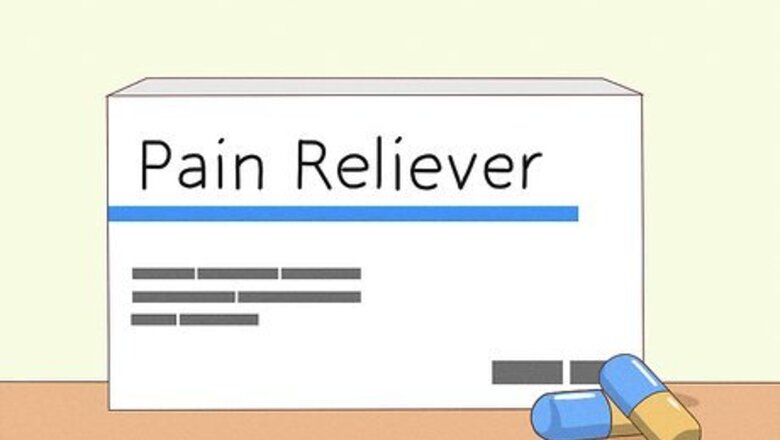
views
X
Expert Source
Alina Lane, DDSBoard Certified Dentist
Expert Interview. 21 April 2020.
However, if you can't get to the dentist, there are a few things you can do at home to relieve your pain as the dry socket heals.
Pain Management
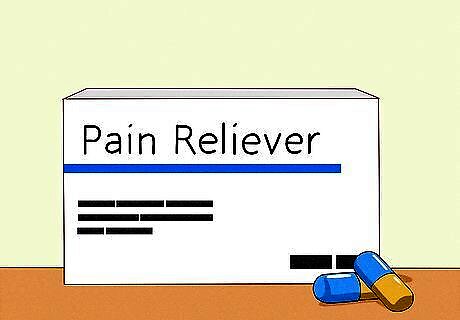
Take pain relievers. Though pain medication will not help the wound heal or prevent infection, it will help you manage the pain associated with a dry socket. Your doctor may recommend a prescription-strength pain medication, or you may wish to stick with over-the-counter medications like aspirin or acetaminophen. Do NOT give aspirin to children or adolescents. Use of aspirin in children or teenagers may cause complications with the liver and brain. Consult with your child's pediatrician for guidance on what medication would work best for your child. Don’t exceed the dosage with ibuprofen either because this can lead to severe stomach or intestinal bleeding.
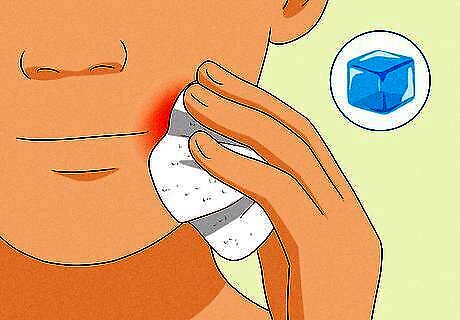
Use ice or a cold compress on the side of your face experiencing pain. Fill a sandwich bag with ice cubes then wrap it in a clean towel. In a pinch, you can also use a bag of frozen vegetables wrapped in a paper towel. Press the compress against your face to soothe pain and inflammation. Keep the ice pack on for 20 minutes, then off for 20 minutes. After 2 days, switch to using a warm compress, as a cold compress will no longer reduce swelling or inflammation after the first 48 hours.
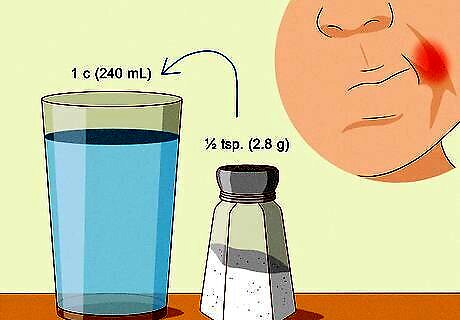
Use a salt water rinse. Add approximately 1/2 tsp (2.8 g) of salt to 1 c (240 mL) of warm water. Then, very gently swish the salt water around in your mouth, focusing on the affected side of your mouth. This will remove debris and help soothe inflammation. Repeat after each meal and before bed.
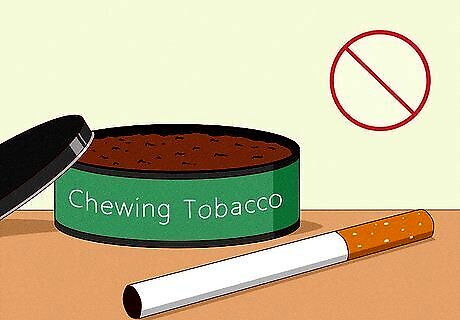
Avoid using tobacco products. The physical act of smoking a cigarette may cause a blood clot to come dislodged, and using chewing tobacco or passing smoke over the socket may further irritate the wound and prolong the pain and inflammation. Try using a nicotine patch if you don't believe you can't quit smoking during the time it takes for your mouth to recover.

Stay hydrated. Drinking clear liquids, especially water at room temperature, is crucial following any surgical procedure. Try to avoid alcohol and caffeine, as those can dehydrate you further. You can also alternate water with a sugar-free sports drink.
Professional Treatment
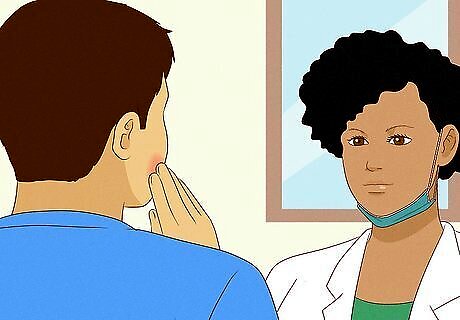
Go to the dentist. If you're experiencing the symptoms of a dry socket, you should see the dentist who performed your extraction. They can rinse the socket and give you an ointment that will help it heal properly. If you aren't able to see the dentist, the dry socket will heal on its own, but it may take longer and be more painful. If the dry socket gets infected, you might also need antibiotics. Your dentist can let you know whether or not that’s necessary.

Flush the socket. Fill a clean, plastic syringe with a curved tip with water or salt water. Place the syringe in your mouth and slowly expel water, moving the syringe around to flush the socket from multiple angles. Be sure that any visible debris is completely removed. Continue to flush after every meal and before bed until the wound begins to heal and debris no longer pools in the socket.
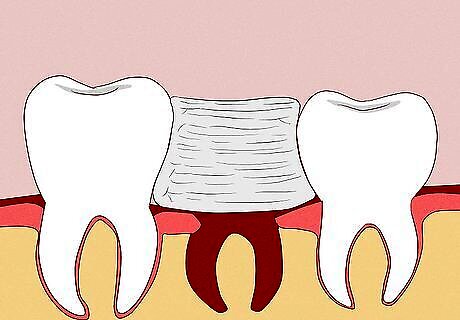
Pack with medicated dressings. The oral surgeon or dentist who performed your tooth extraction may pack the wound with medicated dressings. The medication applied to these dressings can help relieve pain and prevent infection. You will most likely have to change the dressings every day, but your oral surgeon will determine the frequency and duration of medicated dressing applications. If you’d like to try medical dressings, you’ll have to visit your dentist.
Prevention
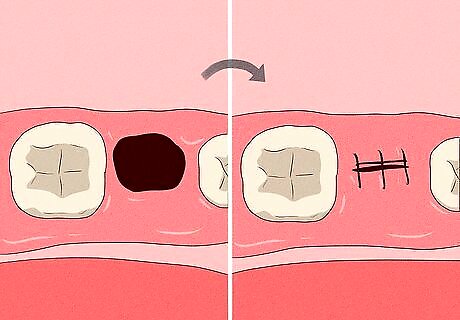
Have your oral surgeon pack the wound immediately after surgery. This has been shown to reduce the incidence of developing a dry socket. Having the wound sutured by your oral surgeon may also prevent a dry socket.
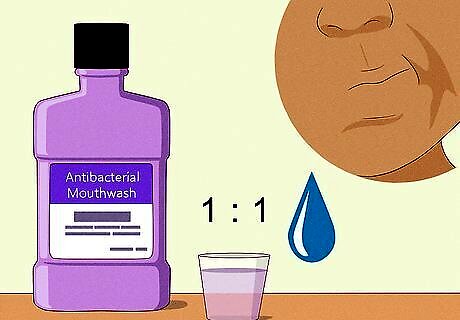
Use antibacterial mouthwash. Do this right before and after surgery for best results. Unscrew the cap and pour mouthwash into the cap. Dilute it with water so that it is 50% water and 50% mouthwash. Gently swish the mouthwash around in your mouth moving your tongue from one cheek to another. You may wish to concentrate your swishing efforts around the affected area. Then, spit the mouthwash into the sink. Rinse your mouth out with water immediately afterward if the sting of mouthwash becomes too intense.
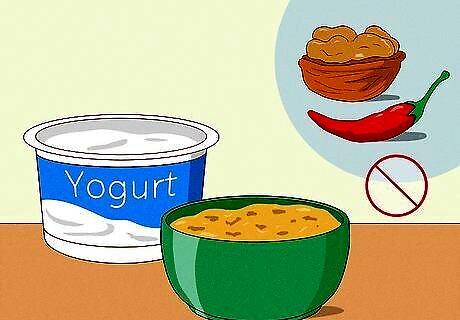
Stick to soft foods. This is especially important during the first 24 hours after surgery. Gradually move from soft foods to semi-soft foods as your wound heals, but it's generally best to avoid hard, chewy, crunchy, and spicy foods, as these are most prone to pooling in the socket and causing irritation or infection. Yogurt and applesauce are great choices as you recover. When you eat, avoid chewing on the side of your mouth that you had surgery on.




















Comments
0 comment